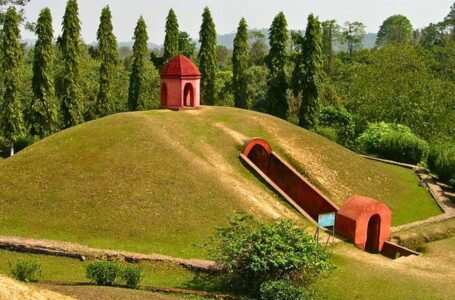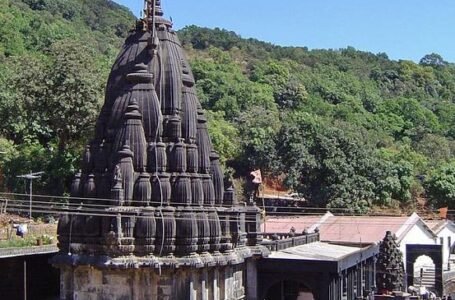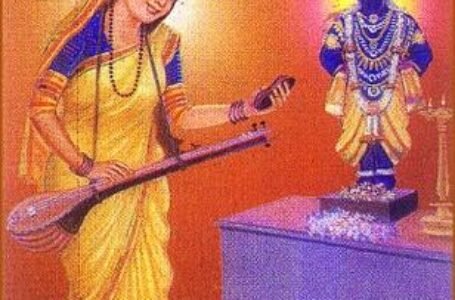Unveiling Bhavabhuti: Delving into the Literary Genius of an 8th Century Indian Playwright
- Ancient history
 Nida Farooqui
Nida Farooqui- October 21, 2023
- 0
- 459
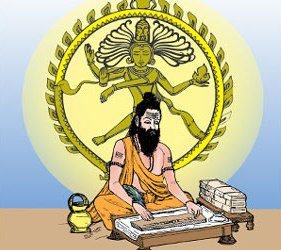
Indian scholar Bhavabhūti, who lived in the eighth century, is renowned for his Sanskrit plays and poetry. He is a prominent figure in ancient Indian literature, standing out as one of the most revered playwrights and poets in the history of Sanskrit literature. His contributions to drama, poetry, and philosophy have left an indelible mark on Indian literary traditions. His plays are regarded as being on par with Kalidasa’s. Because of his work Uttararamacharita, he is referred to as the “Poet of Karun Rasa ”. His plays are considered at par excellence due to the added elements of suspense and vivid characterization.

Bhavabhuti, a Brahman from Vidarbha (the region of central India subsequently known as Berar), spent most of his literary life at the court of Yasovarman of Kannauj (Kanauj). Bhavabhuti is best known as the author of three plays: Mahaviracharita (“Exploits of the Great Hero”), which gives in seven acts the main incidents in the Ramayana up to the defeat of Ravana and the coronation of Rama; Malatimadhava (“Malati and Madhava”), a complex original love intrigue (complete with sorcery, human sacrifice, and Tantric practises) in 10 acts abounding in stirring, though sometimes improbable, incidents; and Uttararamacharita (”The Later Deeds of Rama”), which follows Rama’s tale from his coronation through Sita’s banishment and final reunion. It demonstrates Bhavabhuti’s mastery of characterization as well as tension and climax. Bhavabhuti is regarded as a master of the kavya form, which is characterised by intricate figures of speech, particularly metaphors and similes.

Bhavabhuti’s early life and background
Bhavabhuti was a Kayapagotra brahmin. He was the son of a Nīlakaṇṭha and a Jātukarṇī. He was an ardent supporter of Shiva, and as a result, he was given the name Bhavabhuti as his original name ws Nilakantha. This eminent scholar was born in Padmapura, Vidarbha situated on Maharashtra – Madhya Pradesh border. He was born into a Deshastha Brahmin family of academics. He acquired his schooling in ‘Padmapawaya,’ a town near Gwalior. His guru is said to be Dayananidhi Paramahansa. He wrote his historical plays at ‘Kalpi,’ a village on the banks of the Yamuna. However, Bhavabhuti spent the majority of his life at the court of Yasovarman, King of Kannauj.
Notable Works by Bhavabhuti
While not much is known about his early life, he is celebrated for his remarkable works, particularly in the realm of Sanskrit drama. His two most renowned plays, Uttararamacharita and Malatimadhava have earned him a revered place in Sanskrit literary history. Mahaviracarita is thought to be Bhavabhuti’s debut play. This is divided into seven acts. The theme is inspired by the narrative of Rama. However, there are several differences from the original Ramayana in this play. According to Bhavabhuti, Ravana was a suitor even during the swayamvar of Sita. Certain experts believe that Bhavabhuti only wrote up to the 46th stanza of the fourth act, and that the remainder was written by another poet called Subrahmanya.
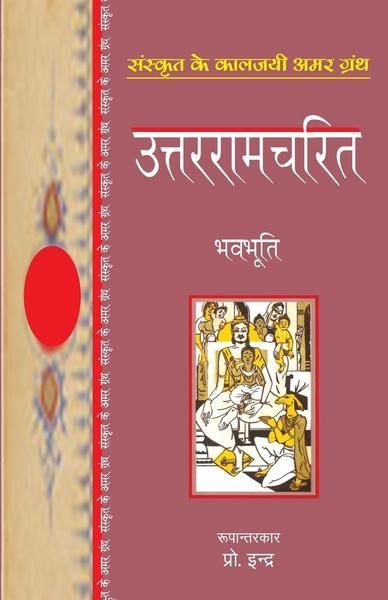
Malatimadhava, another gem in his literary crown, weaves a love story filled with passion and emotion. Mālatīmādhava is a theatrical composition of ten distinct acts, delineating a narrative centred around the amorous relationship between the characters Mālatī and Mādhava. Mālatī, the progeny of the minister hailing from the city of Ujjayinī, and Mādhava, the offspring of the minister representing the region of Vidarbha, serve as the principal protagonists within this dramatic exposition.The dramatic narrative unfolds in the urban milieu of Padmavati, wherein the sovereign aspires to arrange a matrimonial union between Malati, the daughter of his minister, and a young man by the name of Nandana. However, an amorous bond has already formed between Malati and Madhava, ignited by her admiration upon first witnessing him, which culminated in the exchange of portraiture. This mutual affection between Madhava and Malati gives rise to apprehensions within Malati, casting suspicion on her father’s ulterior motives in embracing the King’s proposed alliance. Concurrently, a secondary narrative strand introduces the characters of Makaranda and Madayantika, close confidants of the primary couple. The plot takes a dramatic turn when Madayantika falls victim to a tiger attack, with Makaranda gallantly coming to her rescue, albeit sustaining injuries in the process. After overcoming a series of tumultuous trials and tribulations, the narrative reaches a harmonious resolution, culminating in the joyful unification of both couples. As observed by the distinguished Sanskritist Daniel H.H. Ingalls, Malatimadhava is a literary opus that seamlessly amalgamates elements of romance and terror, achieving a level of literary excellence within the realm of Sanskrit literature that remains unparalleled. Bhavabhut’s unique ability to portray intense human emotions and intricate character relationships made him a trailblazer in the world of Indian theatre.

Uttararāmacarita is a theatrical work composed of seven acts, primarily focused on the narrative of Sītā’s abandonment subsequent to Rāma’s return to Ayodhyā following his period of exile. The initial act serves as a succinct overview of Rāma’s narrative, encompassing events up to the trial by fire endured by Sītā. In the wake of the fire ordeal, a segment of the populace distanced from the circumstances remained unconvinced and subjected Rāma to uncharitable critique for his acceptance of Sītā. This societal disapproval ultimately coerced Rāma into the regrettable decision to part ways with Sītā. He facilitated her departure without adequate explanation, ostensibly granting her the opportunity to revisit the forests during her pregnancy. It is essential to underscore that Rāma harbored no doubts concerning Sītā’s purity, as she remained irrevocably entrenched within his thoughts. Consequently, he endured profound emotional and psychological anguish for the ensuing twelve years.
During this period, Sītā gives birth to twins, Lava and Kusha, who are entrusted to the care of Valmiki. Subsequently, Rāma embarks on a punitive expedition to Panchavati, where he encounters Vasanti, the guardian deity of the forests. Vasanti reproaches Rāma for the abandonment of Sītā, thereby eliciting a sense of remorse and profound suffering within Rāma. Bhavabhuti employs a dramatic presentation, wherein the unseen Sītā becomes a silent observer of Rāma’s profound anguish. Sītā, who herself endures profound sorrow resulting from her inexplicable abandonment, achieves mental reconciliation with her husband when she learns that her golden likeness had been Rāma’s companion during the horse sacrifice. The goddesses Ganga and Prithvi bear witness to Sītā’s chastity, and Arundhati formally reunites Sītā with Rāma after the penitent public unequivocally endorses her reinstatement. Consequently, Sītā and Rāma are joyfully reunited. These three theatrical works were traditionally performed during the Kālapriyanātha festival in Ujjayinī. The primary emotional motif in Mahāvīracarita is characterised by Vīra sentiment, while in Mālatī-Mādhava, it revolves around the theme of Sṛṅgāra, and in Uttararāmacarita, the dominant emotional underpinning is Karuṇa. In the adept expression and elaboration of the sentiment of Karuṇa, Bhavabhūti exhibits a mastery that places him in favourable comparison to Kālidāsa. Nevertheless, the singular deficiency that prevents him from surpassing Kālidāsa lies in his absence of humour and wit.
In accordance with the analysis of Dasharatha Sharma, the renowned playwrights Kalidasa and Bhavabhuti incorporated elements from Kautilya’s seminal work, the Arthashastra, in the composition of their celebrated literary creations. Notably, Kalidasa’s “Raghuvamsa” owes a debt of gratitude to Kautilya’s Arthashastra as a source of thematic and conceptual material.[4] Similarly, Bhavabhuti, in his works “Malatimadhava” and “Mahaviracharita,” demonstrates the utilisation of linguistic constructs and ideological elements drawn directly from the Arthashastra.

An intriguing parallel can be discerned between the strategic methodologies advocated by Malayavana, a minister in the narrative of Ravana, and the pragmatic doctrines outlined by Kautilya within the Arthashastra. This congruence in strategic thought and policy recommendations establishes a noteworthy connection between the literary works of these playwrights and the ancient treatise on statecraft, the Arthashastra. Bhavabhuti’s works also exhibit profound philosophical underpinnings. He was influenced by various schools of thought, including Vedanta and Nyaya. His exploration of morality, dharma, and the human condition adds depth to his plays. This philosophical depth has made his works entertaining and intellectually stimulating.
Influence across Literary and Artistic Genres
Bhavabhuti, an eminent figure in classical Indian literature and theatre, who flourished during the 8th century CE, has bequeathed a substantial and enduring legacy, profoundly influencing the realms of literature, culture, and scholarly inquiry. This impact encompasses several key dimensions. Bhavabhuti is lauded as one of the “Three Jewels of Sanskrit Drama,” alongside the luminaries Kalidasa and Bhasa. His three celebrated theatrical productions, namely “Mahaviracharita,” “Malatimadhava,” and “Uttararamacharita,” have exerted considerable influence, persistently featuring as subjects of scholarly examination and serving as enduring sources of artistic inspiration.Bhavabhuti’s theatrical creations continue to wield substantial influence on Indian cultural and theatrical conventions. They have served as inspirational touchstones for subsequent playwrights and have been instrumental in shaping the progression of classical and regional theatrical forms throughout the Indian subcontinent. Bhavabhuti is often the subject of scholarly comparison with Kalidasa, another eminent figure in the realm of Sanskrit literature. While Kalidasa is celebrated for his poetic and lyrical compositions, Bhavabhuti’s forte lies in his dramatic narratives. This comparative exploration has enriched the appreciation of the multifaceted dimensions of classical Sanskrit literature. Bhavabhuti’s distinct aptitude for encapsulating the sentiment of ‘Karuṇa’ (compassion or pathos) distinguishes him and has left an enduring imprint on the representation of this emotion in classical literature. His evocation of sorrow, sacrifice, and human tribulation in works such as “Uttararamacharita” is particularly remarkable. Bhavabhuti’s influence transcends the boundaries of Sanskrit literature and extends to various manifestations of Indian literature and artistic expression. His emphasis on emotional depth and narrative storytelling has indelibly impacted Indian literary traditions, theatrical arts, and classical dance forms such as Bharatanatyam.

In the contemporary epoch, denizens residing in the vicinity of Padampura are dedicated to preserving the historical legacy of the venerable figure Bhavbhuti. In the year 1950, the esteemed Late Shri Laxmanrao Mankar Guruji bestowed the nomenclature “Bhavbhuti Education Society” upon his educational institution. Likewise, in 1996, Yashodabai Rahile established the “Bhavbhuti Mandal” to foster a communal spirit in honour of the aforementioned luminary.
Distinguished historian and Principal, Mr. O. C. Patle authored a seminal work titled “Bhavbhuti ab geeton mein” (Bhavbhuti, now immortalised in his verses) and further disseminated the poet’s legacy through the production of audio CDs and cassettes. A cultural monument, the “Bhavbhuti Rang Mandir,” has been erected in Gondia City as a tribute to the illustrious Poet Bhavbhuti. The local television channels of the state, namely Sahyadri and E TV Marathi, have undertaken the broadcast of documentaries that illuminate the life and contributions of this eminent poet. Moreover, both individuals and nonprofit organisations have contributed to this commemorative endeavour by erecting statues in locales that were once graced by the poet’s presence.
Conclusion
Bhavabhuti, an eminent Sanskrit playwright and poet, occupies a significant position in the rich tapestry of classical Indian literature. His works, characterised by their profound philosophical and moral themes, intricate language, and intricate poetic devices, have left an indelible mark on the Indian literary tradition. Through his plays, such as Uttararamacharita and Malatimadhava, Bhavabhuti skillfully weaves narratives that explore the complexities of human emotions and ethical dilemmas.
In conclusion, Bhavabhuti’s contributions to the realm of Sanskrit literature have been instrumental in shaping the cultural and intellectual heritage of ancient India. His ability to craft compelling dramas that delve into the depths of human experience and his mastery of classical Sanskrit poetry continue to be celebrated and studied by scholars and enthusiasts alike, attesting to his enduring significance in the world of classical Indian literature. His work serves as a testament to the richness and depth of ancient Indian literature, reminding us of the cultural treasures that have shaped India’s literary heritage. Bhavabhuti’s legacy endures as a source of inspiration for scholars, playwrights, and poets, and his works continue to be celebrated for their profound insights into the human condition.
